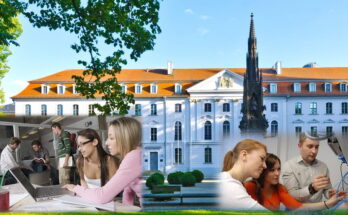Table of Contents
CS001 FINAL TERM PAST PAPERS MEGA FILE
CS001 : Computer Proficiency License Solved Papers
Past papers assist you with detecting particular sorts of questions and recognise them. Seeing how questions are organised and what they’re posing to makes life more straightforward in exams when you’re confronted with loads of questions to figure out! Here you’ll find mega files of solved and unsolved past papers.
If you find past papers from any resource, use them! Do the most that you would be able, in light of the fact that doing various past papers can show you significantly more than doing only one, and they can go far to assist you with further developing your exam strategy, amendment information and, eventually, exam grades.
One of the most important benefits of practising past papers is that it helps students understand topics that are most likely to be put to the test. Since most courses have a variety of related topics, looking at past papers will help save a lot of time that we may spend on subjects that may not be on paper thus making human reviews more effective and more productive.
Benefits of Past Papers
- Helps to understand the length of time for possible testing;
- Indicates the standard number of questions;
- Indicates the number of options provided;
- It helps to find the time needed for each question;
- Identifies style of test questions (short answers, multiple choice or essays);
- It helps to practice test techniques;
- It helps to identify important topics to focus on in the review.
JOIN VU ASSIGNMENT SOLUTION GROUPS AND ALSO SHARE WITH FRIENDS. IN THESE WHATSAPP GROUPS WE SEND A SOLUTION FILE AND LINK FOR YOU. TO JOIN WHATSAPP GROUPS CLICK BELOW LINK.
ALSO SEE:
FINAL TERM PAST PAPERS MEGA FILES
MUST JOIN VU STUDY GROUPS

CS001 FINAL TERM PAST PAPERS MEGA FILE
CS001: Computer Proficiency License
Course Category: Computer Science/Information Technology
Computer Proficiency License
CPL represents the Computer Proficiency License, also known as the VU-CPL. It is a computer-based training course offered to all who are interested in learning how to use computer software, after learning this course you will be comfortable and confident in computer use.
CPL Training Center
The website is designed for this study and has its own training ground. The homepage contains smart links for six modules. You can browse these modules and subtitles using a mouse click.
What is a computer?
A computer is an electronic device that takes data, instructions, and information as input and produces the output (information) after processing it. It is a machine that processes thousands of directions in less than a second and produces output as instructed or programmed.
Basic computer terms
Input
Anything that goes into a computer is called input. For example, text, clear sounds, etc. In everyday life, an example of an input is a voting slip in a ballot box. CS001 FINAL TERM PAST PAPERS MEGA FILE
Input Devices
An input device is any peripheral (a piece of computer hardware) used to deliver data and instructions to a computer, for example, a keyboard and a microphone. An example of everyday life is the hand used to insert a voting slip into a ballot box. So the hand is an input device for the ballot box.
Output
Anything that comes out of a computer is called output. For example, the audio of a video playing on a computer is out.
Output Devices
An output device is hardware used to detect output on a computer. For example, headphones are an output device and are used to listen to audio on a computer. CS001 FINAL TERM PAST PAPERS MEGA FILE
Processing
The computer is provided with data and instructions as embedded, which are processed to create output in the form of information. Data is a raw form of symbols, numbers, pictures, etc., while information is a structured, meaningful, and useful form of data. For example, some data (student enrollment number, name, total marks, marks obtained, etc.) from the internal test are entered. The computer processes data and creates a report of students passing and failing. This report is very organized and useful to us, and the information is just data.
Computer hardware
Computer hardware refers to computer hardware. Examples of hardware on a computer keyboard, monitor, mouse and processing unit. Unlike software, computer software is a virtual business, whereas software is not a reality. Computer hardware and software are connected, without software; computer hardware will not work.
Software
The term software refers to a program or set of instructions used by a computer to perform computer functions. The software can also be defined as a set of processes, rules, and symbolic languages that guide hardware performance. Software is capable of performing certain functions, as opposed to hardware that performs only mechanical functions for which they are designed. We can think or write instructions, but we cannot touch them.
Mainframe Computers
Mainframes are computers where all processing is done in the middle, and user terminals are called “mute terminals” as they include only output (and not processing). The mainframe computers are mainly used by large organizations in critical systems, usually the processing of bulk data such as censuses. Examples: banks and airlines.
Micro-Computers
PC is an acronym for Your Computer, also known as Microcomputer. Its visual features and low cost are attractive and useful for its users. Throughout the 1970s and 1980s, home computers were developed for home use, offering more personalized production, programming, and games, while larger and more expensive systems (though less expensive compared to small computers and mainframes) were intended for office and small businesses.


